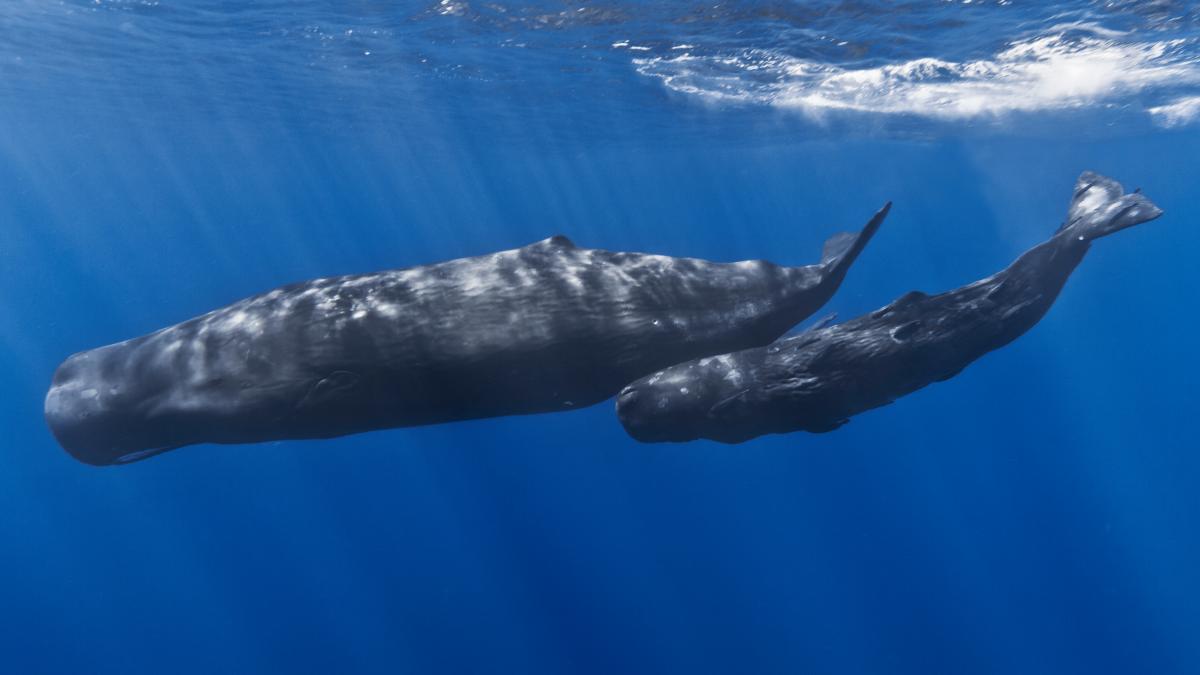 Do you all think these vertebrae are as gorgeous as I do? Just look—beauuutiful. I’m not sure if I’ve told you this before, but I did my undergraduate research on the evolution of vertebral column anatomy among whales. So every time I visit the MCZ, I climb up to the top of the gallery to get a nice, close look at these bones. It’s like my own personal nerdy eye candy.
Do you all think these vertebrae are as gorgeous as I do? Just look—beauuutiful. I’m not sure if I’ve told you this before, but I did my undergraduate research on the evolution of vertebral column anatomy among whales. So every time I visit the MCZ, I climb up to the top of the gallery to get a nice, close look at these bones. It’s like my own personal nerdy eye candy.
 But to whom do they belong? A sperm whale, Physeter macrocephalus. My love for whales is in some ways deeper—and certainly creepier—than my love for xenarthrans. When I see a whale in a museum or on television, I immediately picture their bones, and envision the muscles attached to the various facets of their vertebrae to generate powerful undulatory motion. I appreciate other things, too, like, did you know sperm whales completely collapse their lungs when they dive to avoid getting the bends when they surface? And when they dive, they really dive—deeper than a kilometer and for longer than ninety minutes. Bananas.
But to whom do they belong? A sperm whale, Physeter macrocephalus. My love for whales is in some ways deeper—and certainly creepier—than my love for xenarthrans. When I see a whale in a museum or on television, I immediately picture their bones, and envision the muscles attached to the various facets of their vertebrae to generate powerful undulatory motion. I appreciate other things, too, like, did you know sperm whales completely collapse their lungs when they dive to avoid getting the bends when they surface? And when they dive, they really dive—deeper than a kilometer and for longer than ninety minutes. Bananas.
 Okay, on to our challenge question! Was this particular sperm whale fully mature when it died? The answer is no. How can you tell? Look closely at the vertebrae. There are wooden spacers between each pair to stand in for the cartilaginous disks. See them? Now look at the ends of the bones, there are cracks separating the main bulk of each vertebra from a kind of end-cap. That end-cap is called the epiphysis. As the whale grows, the vertebrae grow, too—and they elongate via growth plates right where you see those cracks. Once the whale has reached maturity, the epiphyses fuse to the main body of the bone. In very young whales, the epiphyses are completely separated from the bone. (I may or may not have spent a lot of time trying to match loose epiphyses to vertebrae in various museum basements…) Closer to maturity, they are attached, but the cracks are still visible. This whale looks like it was nearly full-grown; as you can see, a few of the posterior (toward the tail, which in this photo is off to the left) epiphyses in this photo are fully fused. This process of growth and end-cap fusion is not unique to whales or to vertebrae, of course. Different bones fuse at different times, and degree of epiphyseal fusion in various bones is a common way to estimate age of skeletonized animals of all sorts, including humans.
Okay, on to our challenge question! Was this particular sperm whale fully mature when it died? The answer is no. How can you tell? Look closely at the vertebrae. There are wooden spacers between each pair to stand in for the cartilaginous disks. See them? Now look at the ends of the bones, there are cracks separating the main bulk of each vertebra from a kind of end-cap. That end-cap is called the epiphysis. As the whale grows, the vertebrae grow, too—and they elongate via growth plates right where you see those cracks. Once the whale has reached maturity, the epiphyses fuse to the main body of the bone. In very young whales, the epiphyses are completely separated from the bone. (I may or may not have spent a lot of time trying to match loose epiphyses to vertebrae in various museum basements…) Closer to maturity, they are attached, but the cracks are still visible. This whale looks like it was nearly full-grown; as you can see, a few of the posterior (toward the tail, which in this photo is off to the left) epiphyses in this photo are fully fused. This process of growth and end-cap fusion is not unique to whales or to vertebrae, of course. Different bones fuse at different times, and degree of epiphyseal fusion in various bones is a common way to estimate age of skeletonized animals of all sorts, including humans.
Congratulations to Dan Coleman who got the species, and to Joshua Vallejos who was the first to recognize that the unfused growth plates means that the whale was not quite fully mature. My hat is off to you, gentlemen!
Are you a teacher and want to tell us about an amazing free resource? Do you have an idea for a Misconception Monday or other type of post? Have a fossil to share? See some good or bad examples of science communication lately? Drop me an email or shoot me a tweet @keeps3.

